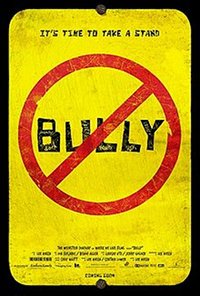Media/Arts
Reflecting on their childhood experiences, many social workers report empathy as being seemingly instinctive. They describe an exceptional sensitivity to the pain of others along with an intense intolerance for injustice. In adulthood, this emotional foundation of compassion and fair-mindedness can develop into a pursuit of social work as a profession. Social workers viewing Lee Hirsch’s fine documentary, Bully, will experience ample compassion and indignation. By following several situations that take viewers inside the bullying experience, the film elicits concern for the bullying victims and rage at the authorities who ignore, deny, or minimize its prevalence. In two of the situations, the bullying victims have committed suicide. We are shown the sorrowful aftermath, with its despair, anger, and determination to make something positive out of the circumstances. In particular, Kirk Smalley, whose son shot himself, makes it his life’s work to talk to parents, children, and school administrators about bullying. And though he does not appear to be a particularly learned man, he speaks with an intensity and eloquence that comes directly from his heart. Although the film shows instances of the intimidation, harsh teasing, and physical torment that occur daily for children in thousands of schools around the country, the ignorance, negligence, and callousness demonstrated by many adults in response to bullying behavior seem equally horrible. One child the film follows is Alex, a shy and awkward adolescent who faces considerable bullying on the school bus and in school hallways. For most of the film, Alex does not speak about this tormenting with anyone. However, in a scene near the end of the film, Alex starts to talk with his father about the abuse he suffers on a daily basis. Unfortunately, his father responds with a distressing coldness and indifference. When talking to his son about the bullying, his only suggestion is to fight back. It appears he offers this suggestion only because Alex’s sister will soon be going to Alex’s school and the father doesn’t want the bullying behavior to spread to her. Fortunately, Alex’s mother demonstrates some understanding of Alex and his situation. The most appalling scene in the film involves a school administrator who is shown talking with two young male students. She has pulled the two students together because they have, according to her, been in a fight on the playground. She insists that they shake hands and try to be friends. One boy easily extends his hand and gives a friendly smile. The other boy refuses. Without any background other than the scene in front of us, it is clear that the boy who refuses to go along with the pretense of peace is a victim of bullying by the other boy. The bullying victim gets a lecture about compromising. But he tells the administrator that she is off course and that the bully is not sincere with his apology. It is difficult to believe that the administrator does not have more insight into the circumstances. What mix of fears, misunderstandings, and outrageous motivations are at work to cause her to so badly mishandle this situation? To ignore what is right in front of her? Bully is an excellent but disturbing documentary. It has tremendous teaching potential for all ages. Given all the offensive behavior I was watching, I honestly failed to notice the profanity that drew so much publicity and resulted in the film receiving an R rating, that fortunately, was later revised so more youths could see the film. Most importantly, this film reminds us to never ignore and to speak out against this hateful and dangerous behavior. — Robert DeLauro, MSW, ACSW, is a freelance writer and consultant with the Labor Management Project in New York City. |

 A Film Review of Bully
A Film Review of Bully